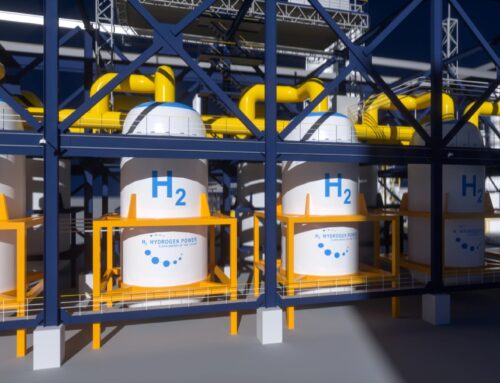Better air quality monitoring needed amid rising air pollution from ports and airports
November 26, 2025
Air pollutant emissions from shipping and aviation are rising, posing an increasing risk to human health, especially for those living near ports and airports, according to a European Environment Agency (EEA) briefing published today. The briefing calls for improved monitoring of air pollution in and around these key transportation hubs.
Maritime transport is projected to become the main source of transport-related air pollution in coastal cities by 2030 the EEA briefing ‘Air quality around ports and airports’ says, which explores the monitoring network and air quality levels at key European ports and airports.
The study supports the EU’s revised Ambient Air Quality Directive, which identifies ports and airports as potential air quality hotspots where additional monitoring may be required to better assess the impacts of these pollution sources. The briefing explores and assesses air quality monitoring networks and air quality levels in and around major ports and airports across 18 European countries, focusing on fine particulate matter (PM2.5) and nitrogen dioxide (NO2) pollutants.

Monitoring air quality hotspots
Nitrogen oxides emissions from maritime transport are rising and the sector contribution to total nitrogen oxides and particulate matter emissions from transport is becoming more relevant compared to other sectors. Also, aviation emissions have increased over the last decades for nitrogen oxides and particulate matter.
The revised EU Ambient Air Quality Directive introduces updated and new standards to be achieved by 2030, aligning more closely with World Health Organization (WHO) recommendations to reduce health and environmental impacts. It also defines ‘air quality hotspots’, areas with particularly high pollution levels that require targeted monitoring efforts, including locations such as ports and airports. Good network design is critical to assess potential harm to human health.
The briefing assessed the number and location of sampling points monitoring air quality near ports and airports. Findings show that current monitoring around some of these transportation hubs is limited (number and location of sampling points locations) and does not fully capture their impact.
Air quality levels around ports and airports
The briefing provides a comparison of pollutant levels between ports and airports and surrounding regions.
Nitrogen dioxide levels at ports and airports were consistently higher than in surrounding regions and in some cases (Piraeus and Napoli ports and Milan Linate airport) were above the revised 2030 EU annual limit value under the EU revised directive. For half of the ports, NO2 levels were over double those in surrounding regions.
The impact on PM2.5 is complex and less directly attributable to port or airport emissions alone as some surrounding regions also showed high levels, with a significant number of ports and airports above the revised 2030 EU annual limit value.
Air pollution remains top environmental health risk
Air pollution is Europe’s largest environmental health risk, with multiple impacts on human health. Fine particulate matter and nitrogen dioxide are two of the main air pollutants in this respect.
Monitoring air quality in and around ports, airports and nearby cities will become more important in the coming decades. This will help assess the role of emissions from shipping and aviation as well as all related activities.
Some of the studied ports and airports may require enhanced monitoring networks as they could be considered air quality hotspots, while the surrounding areas may require measures to reduce air pollution as required by the revised air quality directive.
Search
RECENT PRESS RELEASES
Related Post













